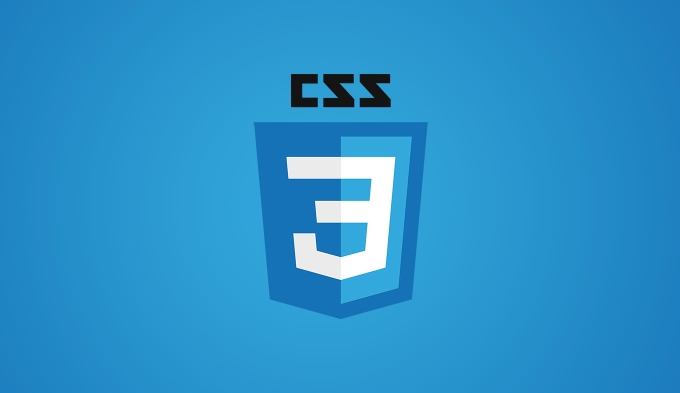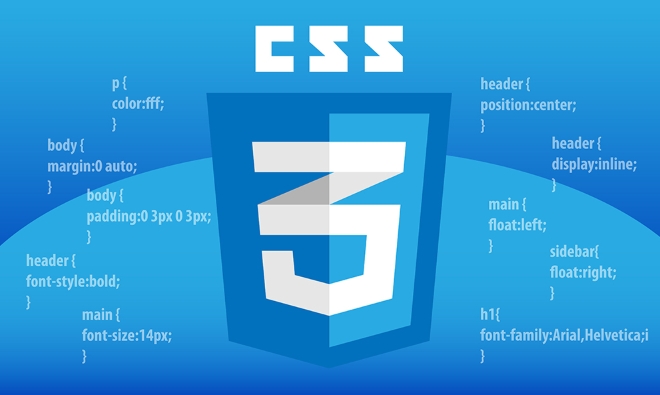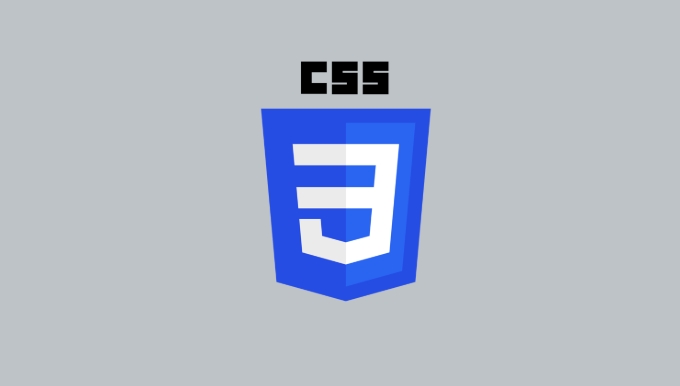It is basically feasible to add styles to SVG elements, but you need to pay attention to their characteristics. 1. Inline SVG can be controlled by CSS through class name, label name, and ID, such as setting properties such as fill, stroke, and supports dynamic effects; 2. External SVG cannot be controlled directly with page CSS, and solutions include inline introduction, SVG internal writing style or JavaScript injection; 3. SVG has unique properties such as fill and stroke, and traditional CSS properties such as background-color are not applicable; 4. Using CSS variables can improve flexibility, facilitate unified management of colors and sizes, and suitable for theme switching and reuse styles.

Adding styles to SVG elements is actually similar to writing ordinary HTML CSS, but it also has its own characteristics. It is completely feasible to directly control SVG with CSS on the web page, but you should pay attention to some details, such as how to select elements, which attributes can be controlled, etc.

1. Inline SVG can be directly controlled with the CSS selector
If you write SVG directly in an HTML file (inline SVG), you can set the style by class name, tag name, and ID just like operating a normal DOM element. For example:

<svg width="100" style="max-width:90%"> <circle class="my-circle" cx="50" cy="50" r="40" /> </svg>
Then write it in CSS:
.my-circle {
fill: red;
stroke: black;
stroke-width: 2px;
}The advantage of this method is that it can dynamically modify the style, such as adding a hover effect or media query.

2. External SVG files cannot be directly used for external CSS
If you introduce an SVG file through the <img alt="Styling SVG elements using css" > tag, or use it as a background image, then you cannot use the CSS on the page to control the elements inside. Because at this time, SVG is loaded as a whole picture, and the content inside is "closed".
There are several solutions:
- Put SVG on the page as inline content
- Write
<style>tag inside the SVG file and add styles to enter - Dynamic style injection using JavaScript
3. Pay attention to the properties unique to SVG
SVG has its own drawing properties, such as fill , stroke , stroke-width , etc., which can be set through CSS, but some traditional CSS properties do not work for SVG. For example, you cannot use background-color to change the color of the SVG graphics, you have to use fill or stroke .
In addition, the abbreviation properties of CSS (such as border ) are not applicable to SVG. Remember: SVG's rendering mechanism is different from HTML, so the style rules are slightly different.
4. Using CSS variables can enhance flexibility
You can use CSS custom properties to define colors or sizes, which makes it easier to reuse multiple SVG elements. For example:
:root {
--icon-color: blue;
}Then quote in the SVG style:
.fill-primary {
fill: var(--icon-color);
}This method is especially suitable for theme switching or unified management of icon colors.
Basically that's it. Although SVG looks like an image, if handled properly on the page, you can actually control the style flexibly.
The above is the detailed content of Styling SVG elements using css. For more information, please follow other related articles on the PHP Chinese website!

Hot AI Tools

Undress AI Tool
Undress images for free

Undresser.AI Undress
AI-powered app for creating realistic nude photos

AI Clothes Remover
Online AI tool for removing clothes from photos.

Clothoff.io
AI clothes remover

Video Face Swap
Swap faces in any video effortlessly with our completely free AI face swap tool!

Hot Article

Hot Tools

Notepad++7.3.1
Easy-to-use and free code editor

SublimeText3 Chinese version
Chinese version, very easy to use

Zend Studio 13.0.1
Powerful PHP integrated development environment

Dreamweaver CS6
Visual web development tools

SublimeText3 Mac version
God-level code editing software (SublimeText3)
 CSS tutorial for creating loading spinners and animations
Jul 07, 2025 am 12:07 AM
CSS tutorial for creating loading spinners and animations
Jul 07, 2025 am 12:07 AM
There are three ways to create a CSS loading rotator: 1. Use the basic rotator of borders to achieve simple animation through HTML and CSS; 2. Use a custom rotator of multiple points to achieve the jump effect through different delay times; 3. Add a rotator in the button and switch classes through JavaScript to display the loading status. Each approach emphasizes the importance of design details such as color, size, accessibility and performance optimization to enhance the user experience.
 Addressing CSS Browser Compatibility issues and prefixes
Jul 07, 2025 am 01:44 AM
Addressing CSS Browser Compatibility issues and prefixes
Jul 07, 2025 am 01:44 AM
To deal with CSS browser compatibility and prefix issues, you need to understand the differences in browser support and use vendor prefixes reasonably. 1. Understand common problems such as Flexbox and Grid support, position:sticky invalid, and animation performance is different; 2. Check CanIuse confirmation feature support status; 3. Correctly use -webkit-, -moz-, -ms-, -o- and other manufacturer prefixes; 4. It is recommended to use Autoprefixer to automatically add prefixes; 5. Install PostCSS and configure browserslist to specify the target browser; 6. Automatically handle compatibility during construction; 7. Modernizr detection features can be used for old projects; 8. No need to pursue consistency of all browsers,
 Creating custom shapes with css clip-path
Jul 09, 2025 am 01:29 AM
Creating custom shapes with css clip-path
Jul 09, 2025 am 01:29 AM
Use the clip-path attribute of CSS to crop elements into custom shapes, such as triangles, circular notches, polygons, etc., without relying on pictures or SVGs. Its advantages include: 1. Supports a variety of basic shapes such as circle, ellipse, polygon, etc.; 2. Responsive adjustment and adaptable to mobile terminals; 3. Easy to animation, and can be combined with hover or JavaScript to achieve dynamic effects; 4. It does not affect the layout flow, and only crops the display area. Common usages are such as circular clip-path:circle (50pxatcenter) and triangle clip-path:polygon (50%0%, 100 0%, 0 0%). Notice
 What is the difference between display: inline, display: block, and display: inline-block?
Jul 11, 2025 am 03:25 AM
What is the difference between display: inline, display: block, and display: inline-block?
Jul 11, 2025 am 03:25 AM
Themaindifferencesbetweendisplay:inline,block,andinline-blockinHTML/CSSarelayoutbehavior,spaceusage,andstylingcontrol.1.Inlineelementsflowwithtext,don’tstartonnewlines,ignorewidth/height,andonlyapplyhorizontalpadding/margins—idealforinlinetextstyling
 Styling visited links differently with CSS
Jul 11, 2025 am 03:26 AM
Styling visited links differently with CSS
Jul 11, 2025 am 03:26 AM
Setting the style of links you have visited can improve the user experience, especially in content-intensive websites to help users navigate better. 1. Use CSS's: visited pseudo-class to define the style of the visited link, such as color changes; 2. Note that the browser only allows modification of some attributes due to privacy restrictions; 3. The color selection should be coordinated with the overall style to avoid abruptness; 4. The mobile terminal may not display this effect, and it is recommended to combine it with other visual prompts such as icon auxiliary logos.
 How to create responsive images using CSS?
Jul 15, 2025 am 01:10 AM
How to create responsive images using CSS?
Jul 15, 2025 am 01:10 AM
To create responsive images using CSS, it can be mainly achieved through the following methods: 1. Use max-width:100% and height:auto to allow the image to adapt to the container width while maintaining the proportion; 2. Use HTML's srcset and sizes attributes to intelligently load the image sources adapted to different screens; 3. Use object-fit and object-position to control image cropping and focus display. Together, these methods ensure that the images are presented clearly and beautifully on different devices.
 Demystifying CSS Units: px, em, rem, vw, vh comparisons
Jul 08, 2025 am 02:16 AM
Demystifying CSS Units: px, em, rem, vw, vh comparisons
Jul 08, 2025 am 02:16 AM
The choice of CSS units depends on design requirements and responsive requirements. 1.px is used for fixed size, suitable for precise control but lack of elasticity; 2.em is a relative unit, which is easily caused by the influence of the parent element, while rem is more stable based on the root element and is suitable for global scaling; 3.vw/vh is based on the viewport size, suitable for responsive design, but attention should be paid to the performance under extreme screens; 4. When choosing, it should be determined based on whether responsive adjustments, element hierarchy relationships and viewport dependence. Reasonable use can improve layout flexibility and maintenance.
 What are common CSS browser inconsistencies?
Jul 26, 2025 am 07:04 AM
What are common CSS browser inconsistencies?
Jul 26, 2025 am 07:04 AM
Different browsers have differences in CSS parsing, resulting in inconsistent display effects, mainly including the default style difference, box model calculation method, Flexbox and Grid layout support level, and inconsistent behavior of certain CSS attributes. 1. The default style processing is inconsistent. The solution is to use CSSReset or Normalize.css to unify the initial style; 2. The box model calculation method of the old version of IE is different. It is recommended to use box-sizing:border-box in a unified manner; 3. Flexbox and Grid perform differently in edge cases or in old versions. More tests and use Autoprefixer; 4. Some CSS attribute behaviors are inconsistent. CanIuse must be consulted and downgraded.






